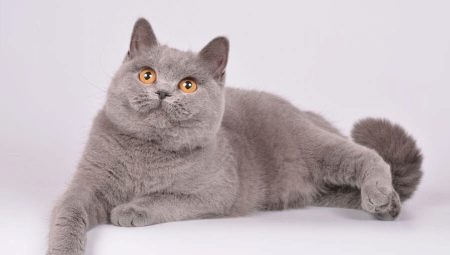The purple color of the coat of British cats is quite common and at the same time does not lose popularity. This is a beautiful, pleasant and soft color, which immediately suggests that you have a really thoroughbred pet.
Color features
A high-quality representative of the British family has dense, plush and matte-shiny hair. The color of lilac is plain, smoky and even, with minimal lightening of the undercoat. Purple color can be of three types:
- dark shade similar to a beige and coffee color;
- medium purple - light, but with a purple tint;
- light purple - The lightest color with a pink tint.
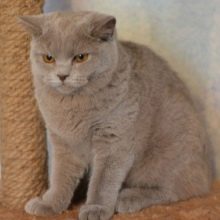
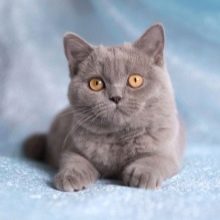

The color of the eyes of a cat with a purple color can be amber, copper or orange. This combination of color of hair and eyes looks very beautiful. An amazing lilac shade of wool among the British appeared thanks to breeders. This breed does not have a gene responsible for lilac color - the shade appeared only due to the long efforts of scientists and breeders.
The purple color is obtained by lightening the chocolate color of the coat. Therefore, pets of lilac shades are one of the most expensive, and you can buy real British with lilac color only from trusted breeders.
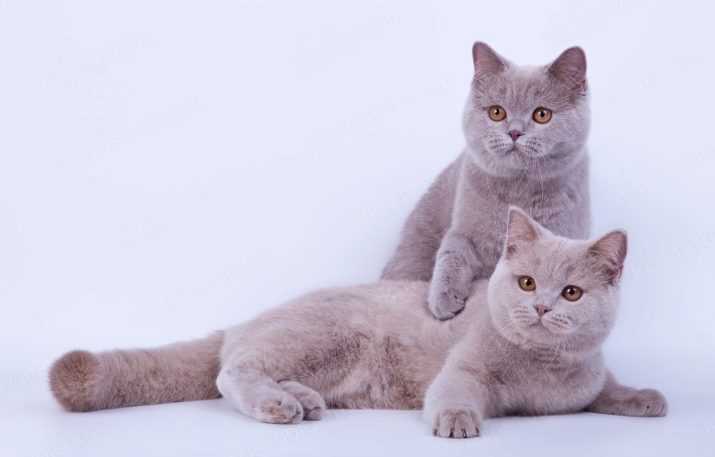
Kittens
Lilac kittens can be born with an uneven coat color, specks or stripes. This in no way means that the kittens are defective - with age, the pigment acquires uniformity, spots and stripes go away. After about 6 months, the kitten becomes the same color as an adult cat or a cat with a purple color.
If the animal has a color defect, then it is not used for further breeding, but is sold to the family only as a pet without the right to breed.
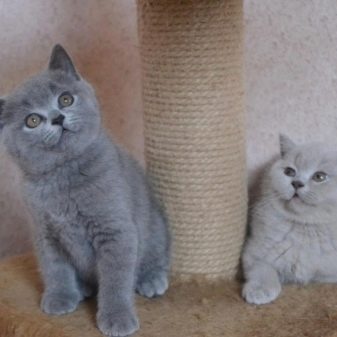
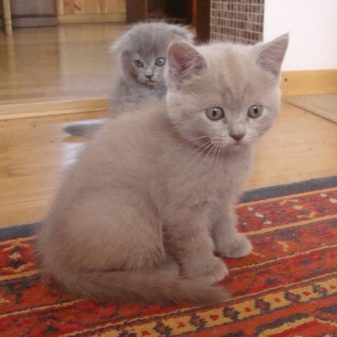
Character
The British lilac cat is an affectionate and friendly creature, but with a proud and independent disposition. These animals are playful and do not like to be alone. But if they don’t like something, they will report it defiantly. Children purple cats are good, but wary.
If the child will be aggressive towards such a cat, then she will answer him the same. With proper treatment, the Briton will become a true friend of the child and will not offend him.

Many representatives of the British are quite stubborn and touchy. Cats can be vindictive, but always quickly "depart." Stroking and playing with the British is only when they have the mood, otherwise you risk violating personal boundaries, according to the pet. In all other respects, these are surprisingly calm and aristocratic animals. They are neat and tidy, very smart and calm.

Content Rules
Proper care of an adult pet or kitten will save and prolong the health of the animal. The British need regular hair care: combing, bathing, grooming. The hair of cats of this breed is thick and short, and the animals themselves are very clean and carefully licked. But combing them is necessary in order to get rid of the lost hair, bring gloss and gloss to the coat. The cat, licking the fallen hair, swallows it.
Hair collects in the stomach into lumps and causes discomfort, this can lead to serious illnesses. Therefore, pets should be combed regularly and given special preparations for the accumulation of wool in the body.
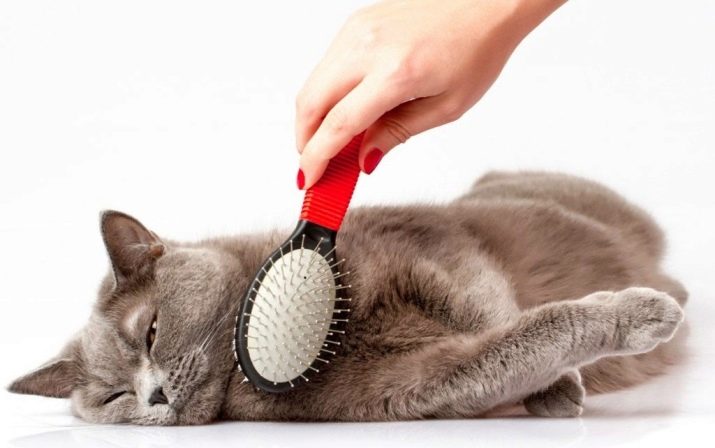
It is also necessary to clean your ears and nose every few weeks, and cut your nails. Eyes can be helped to flush a cat daily. The teeth of the British also need to be monitored and periodically given special dry food from tartar. In addition, thoroughbred individuals are susceptible to many genetic diseases.
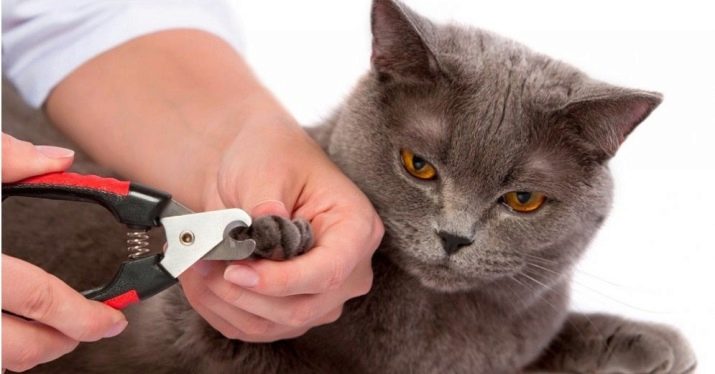
The British may have problems with the eyes, internal organs. Therefore, timely visits to the veterinarian and vaccination are extremely important.

Parenting
The acquisition of a kitten usually begins with a reservation. Then, only from 2 months of age can the animal be given to new owners. Why does it take so long? Kittens, like babies, are associated with their mother, and not just food, the first time after birth. Mom teaches them the first steps and many other things that are not visible to us, people. After 2-3 months, the kitten is ready to leave mother and move into a new family to live independently. In addition, for these 3 months, breeders teach kittens the tray, diet and claw point.
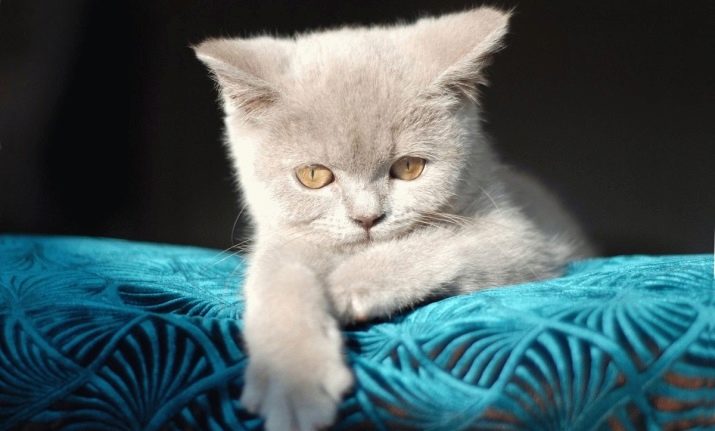
After the kitten has moved to a new house, it needs to continue to be raised. You need to feed your pet in one particular place and at the same time. After moving the toilet must first be installed in a place visible to the kitten so that he understands that his tray is with him. The tray should be gradually moved to the toilet, and after some time the kitten will only go to its tray in the place where it is convenient for you.
You should not feed the animals from the table, otherwise they will get used to climb on it and wait for the “snacks”. If you want to treat something to a kitten (something permitted), then put it in his bowl.
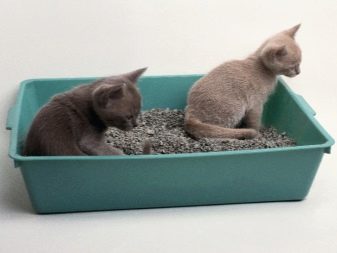
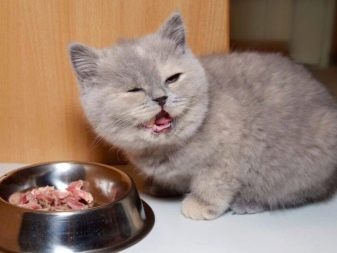
Nicknames
If you get a kitten with an impressive pedigree, then a long “catchy” name will be written in his passport. You can choose a short nickname based on this name or come up with a new one. To do this, observe a new family member for 1-2 months, study his character and habits, and it will become clear which name to choose.
Violet British with their beautiful coat color will have interesting, aristocratic and light nicknames. For example, boys can be called Zephyr, Lucas, Light, Iago, Chelsea. Girls will like nicknames like Olivia (Olive), Perry, Leda, Athena, Fury, Vega, Medea.
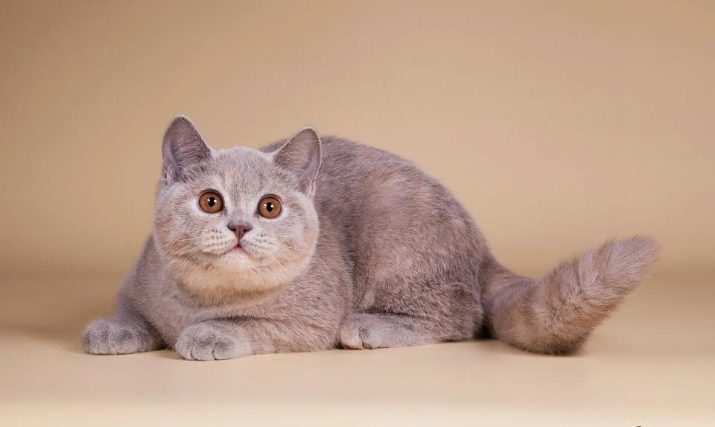
Usually people give nicknames to their pets based on the nature of the cat or cat. If the animal is shy, disorderly and mischievous, then the arrogant aristocratic name will not suit him. And, on the contrary, quiet, mannered and proud pets cannot be called a colossal nickname like Bandit or Masha. The name for the Briton should be chosen meaningfully, because now it is your full member of the family, and not a toy. Here is another list of interesting and non-banal nicknames for purple Britons:
- Gin;
- Rocky
- Rodie;
- Akela;
- Truffle;
- Titanium;
- Haze;
- Kasia;
- Toffee;
- Chapa
- Dumb;
- Ariel
Whatever name you choose for your pet, the main thing is to take care of him properly, because this is your new full member of the family.
On the pros and cons of the British purple cat, see the next video.
